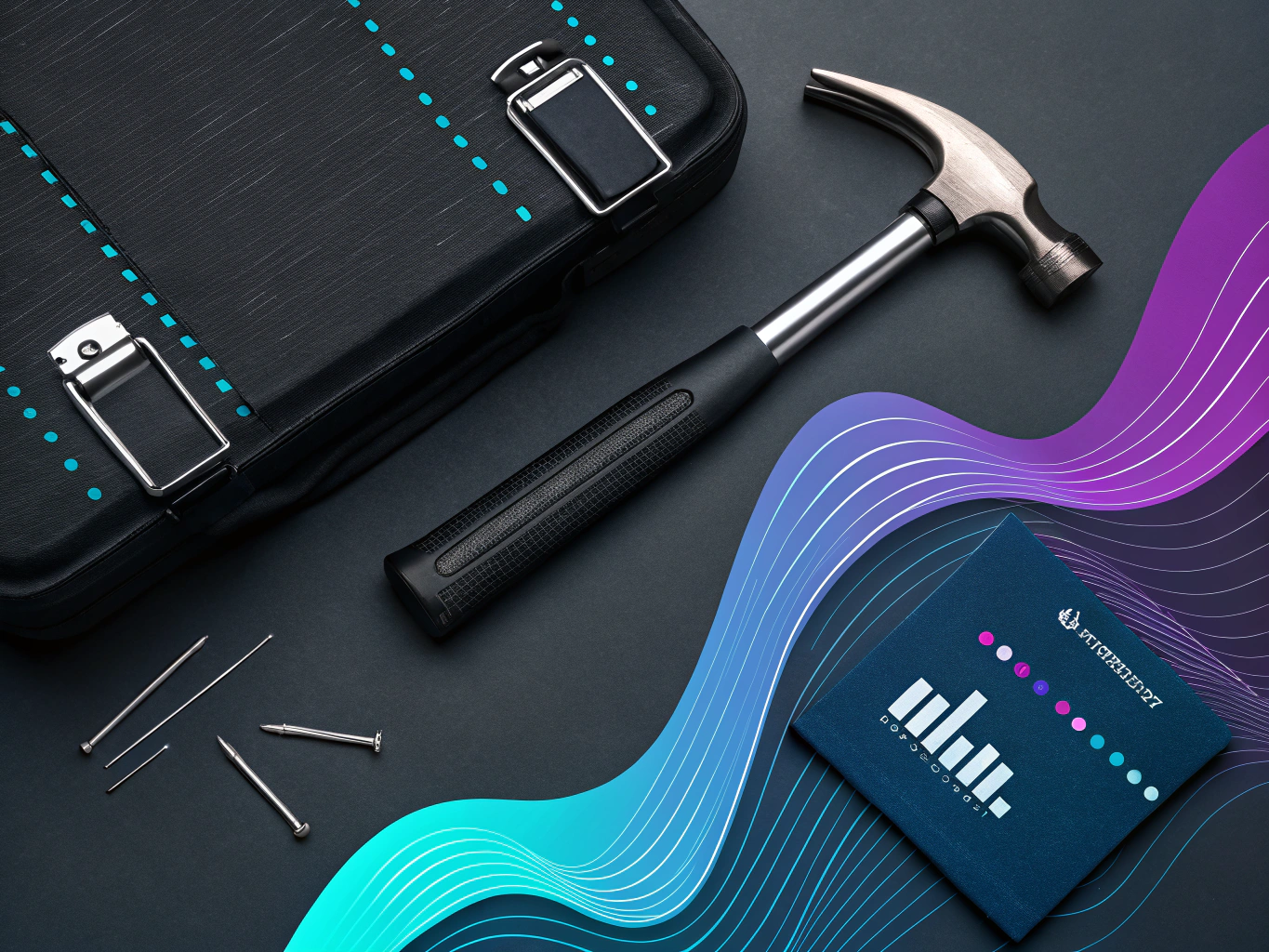Let’s get real about selling used books on Amazon in 2025. I’ve seen countless entrepreneurs dive into this space thinking it’s an easy path to passive income, only to find themselves drowning in inventory and wondering why their profit margins look thinner than a paperback’s spine.
But here’s the thing – the used book market on Amazon isn’t dead. Far from it. While everyone’s busy chasing the next big thing in dropshipping or trying to crack the code of private label products, there’s still serious money to be made in the humble world of second-hand books. You just need to know how to play the game differently than the folks who tried five years ago.
Getting Started with Amazon Book Sales: The Foundation You Can’t Skip
Before you start dreaming about turning your garage into a mini Powell’s Books, let’s talk about the nuts and bolts of getting set up. Think of this like building a house – you wouldn’t start with the roof, right?
Account Setup: Individual vs. Professional Seller
Here’s where most people mess up – they jump straight into a Professional seller account without understanding the implications. At $39.99 per month, it’s not exactly pocket change. For beginners, I actually recommend starting with an Individual account. Yes, you’ll pay $0.99 per sale, but it’s a lower-risk way to test the waters.
The math is simple: if you’re selling fewer than 40 items monthly, stick with Individual. Once you cross that threshold, Professional becomes your better bet. Plus, Professional accounts get access to bulk listing tools that’ll save your sanity when you’re dealing with hundreds of books.
The Real Cost Breakdown (Nobody Talks About This)
Let’s break down the actual costs you’re looking at:
- Referral fees: 15% of your sale price
- Closing fees: $1.80 per media item
- FBA fees (if you go that route): Variable, but expect $2.50-$5.00 per book
- Storage fees: $0.75 per cubic foot monthly (standard size)
But here’s what nobody tells you – it’s not just about the Amazon fees. You need to factor in your sourcing costs, shipping materials, and the time you’ll spend hunting for inventory. Time is money, friends, and I’ve seen too many sellers forget to value their own hours.
Sourcing Used Books: Where the Real Money Hides

Finding Profitable Inventory (Without Breaking the Bank)
Remember when book scanning apps first hit the scene? Everyone and their mother was running around thrift stores, scanning everything in sight. Those days aren’t completely gone, but the game has evolved. You need a more sophisticated approach now.
First things first – get yourself a reliable bluetooth scanner and a solid scanning app. ScoutIQ and Jungle Scout are popular choices, but personally, I’ve found that combining multiple tools gives you the most accurate picture. Why? Because relying on a single data point is like trying to navigate with just a compass – you might head in the right direction, but you’ll miss a lot of landmarks along the way.
For more insights, consider checking out BookScouter’s tips for buying and selling books effectively.
The Secret Sauce: Where to Actually Find Books
Here’s where I see most beginners waste their time – they hit up the obvious spots like Goodwill and library sales, fighting with every other reseller in town. Instead, try these less-crowded sources:
- Estate sales (especially in academic areas)
- College dorm move-out days
- Local Facebook marketplace bulk listings
- Small-town thrift stores (seriously, get out of the city)
- Online arbitrage opportunities (but we’ll dive deeper into that later)
Evaluating Book Condition: The Make-or-Break Skill
This is where experience really counts. Amazon’s condition guidelines are strict, and one wrong move can tank your seller metrics faster than a textbook prices drop after finals week. Here’s my practical guide to condition assessment:
- “Like New” – Don’t even think about it unless the book literally just came off the press
- “Very Good” – Your bread and butter condition. Minor wear is okay
- “Good” – Where most of your inventory will likely fall
- “Acceptable” – Use sparingly, and only for rare or high-demand titles
Pro tip: Create a standardized checklist for evaluating books. Check the spine, flip through pages for highlighting or notes, and always, always check for water damage. One moldy book can contaminate your entire inventory, and trust me, that’s a mistake you only make once.
The Tech Stack You Actually Need
Let’s cut through the noise about tools and tech. Yes, you need some software to compete effectively, but you don’t need to blow your budget on every shiny new tool that promises to “revolutionize” your business.
Essential Tools vs. Nice-to-Haves
Here’s what you absolutely need to start:
- A reliable book scanning app (I recommend starting with Amazon Seller App)
- Basic inventory tracking (Excel works fine to start)
- Shipping label printer (thermal is best, but inkjet works for beginning)
And here’s what can wait until you’re making consistent sales:
- Automated repricing tools
- Advanced inventory management systems
- Multi-channel listing software
Remember, every dollar you spend on tools is a dollar that’s not going toward inventory. Start lean, and let your business growth dictate when it’s time to level up your tech stack.
Sourcing Used Books for Amazon: Where the Real Money Lies
Look, I’ve seen countless sellers jump into the Amazon book game thinking they’ll just raid their basement library and make bank. Spoiler alert: that’s not how this works. The real profit comes from systematic sourcing – and I’m going to show you exactly how to do it without burning through your savings.
Finding Profitable Inventory That Actually Sells
Here’s the thing about book sourcing in 2025: it’s both easier and harder than ever. Easier because we have incredible tools at our disposal (more on that in a sec), harder because competition is fierce. But there’s still plenty of money to be made if you know where to look.
Library sales remain the holy grail of book sourcing – but not for the reasons most think. Sure, you can find gems for pennies on the dollar, but the real value is in the patterns you’ll start to notice. Which sections consistently yield profitable finds? Which editions command premium prices?
To dive further into strategies, read more on how to sell books on Amazon.
The Scanner Revolution: Your Secret Weapon
Let’s talk about book scanners – they’re like having a profit calculator in your pocket. The bluetooth scanner paired with apps like ScoutIQ or Jungle Scout’s scanning tool can tell you instantly whether a book is worth your time. But here’s what most guides won’t tell you: scanning speed matters more than accuracy. I’d rather scan 200 books with 80% accuracy than 50 books with 100% accuracy. It’s a numbers game.
The Art of Book Condition Assessment

This is where selling used books on Amazon gets tricky. Amazon’s condition guidelines read like they were written by a committee of librarians on coffee. Here’s my simplified version:
- New: Still in shrinkwrap or pristine
- Like New: Looks unread, no marks
- Very Good: Minor wear, no writing
- Good: Some wear, maybe highlighting
- Acceptable: Readable but worn
The Truth About Online Arbitrage in the Book Game
Online arbitrage for books is like mining for gold in 2025 – the easy stuff is gone, but there’s still plenty if you know where to dig. I’ve seen sellers make $200-300 per day just flipping textbooks between different online marketplaces. The key? Timing and volume.
Setting Up Your Amazon Book Empire
Let’s get real about what it takes to sell textbooks on amazon and build a sustainable business. First up: your seller account. Go Professional if you’re serious – the $39.99 monthly fee pays for itself if you’re moving more than 40 books a month.
Listing Creation That Actually Converts
Your listings need to be clear, accurate, and detailed. But here’s what most sellers miss: psychological triggers. When describing condition, use phrases like “carefully stored” instead of just “good condition.” It’s not about manipulation – it’s about communication.
Here’s my proven formula for book listings:
- Specific edition details upfront
- Honest condition assessment
- Any unique features or markings
- Clear return policy
Pricing Strategies That Won’t Leave Money on the Table
Pricing used books on Amazon is part science, part art, and part psychology. I’ve seen sellers tank their profits by racing to the bottom on price. Instead, consider these factors:
- Sales rank history (not just current rank)
- Competitive prices for similar conditions
- Seasonal demand (especially for textbooks)
- Your acquisition cost and desired margin
The FBA vs. Merchant Fulfilled Showdown
The eternal question: should you use Amazon FBA or ship books yourself? Here’s my take: FBA makes sense when:
- Your books sell for $15+ consistently
- You’re dealing in textbooks or other high-value items
- Storage space at home is limited
- You value time over immediate profit
But merchant fulfillment wins when:
- You’re dealing with lots of lower-priced books
- You have efficient shipping systems in place
- Storage isn’t an issue
- You want to maximize profits on each sale
Inventory Management That Won’t Drive You Crazy
Let’s talk about keeping track of your books without losing your mind. I’ve seen sellers try everything from Excel spreadsheets to complex inventory management systems. Here’s what actually works:
- Simple barcode system for location tracking
- Regular inventory audits (monthly at minimum)
- Clear storage organization (by genre or value)
- Automated reordering for consistent sellers
The key is finding a system that you’ll actually use. The fanciest inventory management software in the world won’t help if it’s too complicated for daily use.
Building a Book Business That Lasts

Want to know how to make money selling used books on Amazon long-term? It’s about systems, not hustle. The sellers who succeed aren’t necessarily working harder – they’re working smarter. They’re the ones who:
- Automate repetitive tasks
- Build relationships with reliable suppliers
- Track their metrics obsessively
- Adapt to market changes quickly
The Truth About Scaling
Can you make money selling used books on Amazon? Absolutely. Is selling used books on Amazon profitable at scale? That depends entirely on your systems. I’ve seen sellers crash and burn trying to scale too quickly, while others steadily build six-figure businesses.
The secret? Start small, perfect your processes, then expand. It’s not sexy advice, but it works. And in this business, that’s what matters.
Building a Sustainable Book Business on Amazon
Look, I’ve seen too many sellers jump into the used book game thinking they’ll make a quick buck, only to burn out faster than a Game of Thrones finale. The truth? Building a sustainable book business on Amazon isn’t just about scanning barcodes at thrift stores (though that’s part of it). It’s about creating systems that scale.
Scaling Your Book Operation: From Side Hustle to Full-Time Gig
Remember that intern analogy I love using with AI? Well, your book business starts as an intern too – eager but needing guidance. As you scale, it needs to graduate to a well-oiled machine. Here’s what that looks like:
- Inventory Expansion: Start with 100 books, aim for 1000+
- Process Automation: Implement scanning tools like ScoutIQ or Jungle Scout
- Team Building: Hire part-time help for scanning and listing
- Financial Planning: Track ROI per book category
I’ve seen sellers go from 5 books per day to 50+ by simply implementing proper inventory management systems. It’s not rocket science – it’s about being methodical and treating this like a real business.
Advanced Selling Strategies That Actually Work
Let’s get real about market analysis. You can’t just throw books on Amazon and hope they sell. You need to be smarter than that. Here’s what’s working in 2025:
Market Analysis That Makes Sense
Think of market analysis like being a book detective. You’re looking for patterns, trends, and opportunities others miss. Use tools like Keepa to track price history and sales rank. But don’t just rely on tools – develop that sixth sense for what sells.
I recently watched a seller make $5000 in a month just by focusing on vintage computing books – a niche everyone else ignored. The key? They noticed a pattern in their sales data that showed tech professionals were collecting these as reference materials.
Marketing Beyond Just Listings
Your books need to be found to be sold. That means getting creative with visibility:
- Build a social media presence showcasing unique finds
- Create email lists for repeat buyers
- Consider cross-listing on other platforms
- Focus on customer retention through excellent service
Tools and Resources You Actually Need

Let’s cut through the noise. You don’t need every tool under the sun, but some are non-negotiable:
Essential Software That’s Worth Your Money
- Inventory Management: InventoryLab or similar
- Pricing Tools: Keepa, CamelCamelCamel
- Bluetooth Scanner: Something reliable like the KDC200i
- Accounting Software: QuickBooks or Wave for smaller operations
Pro tip: Start with the basics and add tools as you scale. I’ve seen too many sellers blow their budget on fancy tools before they have the sales to justify them.
Troubleshooting Common Issues (Because They Will Happen)
Running an Amazon book business is like navigating a minefield sometimes. Here’s how to handle the bombs:
Seller Protection That Actually Works
Document everything. And I mean everything. Photos of books before shipping, condition notes, customer communications. When Amazon asks questions (and they will), you want answers ready.
Problem Resolution Without Losing Your Mind
Customer complaints are inevitable. The key is having a system:
- Respond within 24 hours
- Keep emotions out of it
- Document all interactions
- Know when to cut losses
The Future of Used Book Selling on Amazon
Let’s talk about where this is all heading. The used book market isn’t dying – it’s evolving. With online arbitrage tools getting smarter and AI helping with pricing decisions, the game is changing. But here’s the thing: the fundamentals still matter.
Success in this business comes down to three things:
- Building efficient systems that scale
- Understanding your numbers cold
- Providing consistently excellent service
Final Thoughts: Is Selling Used Books on Amazon Still Worth It?
Here’s the truth: yes, but only if you’re willing to treat it like a real business. The days of casual flipping are fading. The sellers who succeed in 2025 are the ones who:
- Invest in proper tools and systems
- Build relationships with suppliers
- Stay adaptable with market changes
- Focus on long-term sustainability over quick profits
Remember: this isn’t a get-rich-quick scheme. It’s a legitimate business opportunity that requires real work, smart systems, and consistent execution. But for those willing to put in the effort? The market’s still there, and it’s still profitable.
Start small, learn the ropes, and scale intelligently. Focus on building systems that can grow with you. And most importantly, never stop learning – because in this business, the moment you think you know everything is the moment you start falling behind.
Now get out there and start building your book empire. Just remember to start with that first book scan – we all started somewhere.
👉👉 Create Photos, Videos & Optimized Content in minutes 👈👈
Related Articles:
- The Impact of Customer Reviews on Your Amazon Product Listings
- How to Write Amazon Merch Descriptions Using ChatGPT
- What is Amazon Digital Charge and How Can You Manage It?
Frequently Asked Questions
Does amazon sell textbooks?
Selling textbooks on Amazon involves listing the books in the ‘Books’ category, ensuring they have accurate descriptions, and setting competitive prices. Textbooks tend to have higher demand, especially during back-to-school seasons, and using the Amazon Seller app can help streamline listing and pricing strategies.
Can you make money selling used books on amazon?
Yes, you can make money selling used books on Amazon. Success depends on factors like sourcing books at low costs, understanding market demand, and optimizing listings with competitive pricing. Many sellers find profitability by focusing on niche markets or rare books.
How to make money selling used books on amazon?
To make money selling used books on Amazon, start by sourcing books from thrift stores, garage sales, or clearance sales. Use tools like Amazon’s Seller app to research pricing and demand, and ensure your listings are detailed and well-described. Consider using Fulfillment by Amazon (FBA) to handle storage and shipping, which can improve seller trust and increase sales.
Is selling used books on amazon profitable?
Selling used books on Amazon can be profitable if approached strategically. The key is to find books at low acquisition costs and resell them at a higher price while keeping an eye on Amazon’s fees. Profitability is often enhanced by targeting specific genres or rare editions that have less competition.
How much can you make selling used books on amazon?
The amount you can make selling used books on Amazon varies widely based on factors like book selection, pricing strategy, and sales volume. Some sellers report making a few hundred dollars a month, while others who scale up their operations can earn thousands. Success is often tied to efficient sourcing and understanding market trends.
About the Author
Vijay Jacob is the founder and chief contributing writer for ProductScope AI focused on storytelling in AI and tech. You can follow him on X and LinkedIn, and ProductScope AI on X and on LinkedIn.
We’re also building a powerful AI Studio for Brands & Creators to sell smarter and faster with AI. With PS Studio you can generate AI Images, AI Videos, Chat and Automate repeat writing with AI Agents that can produce content in your voice and tone all in one place. If you sell on Amazon you can even optimize your Amazon Product Listings or get unique customer insights with PS Optimize.
🎁 Limited time Bonus: I put together an exclusive welcome gift called the “Formula,” which includes all of my free checklists (from SEO to Image Design to content creation at scale), including the top AI agents, and ways to scale your brand & content strategy today. Sign up free to get 200 PS Studio credits on us, and as a bonus, you will receive the “formula” via email as a thank you for your time.
